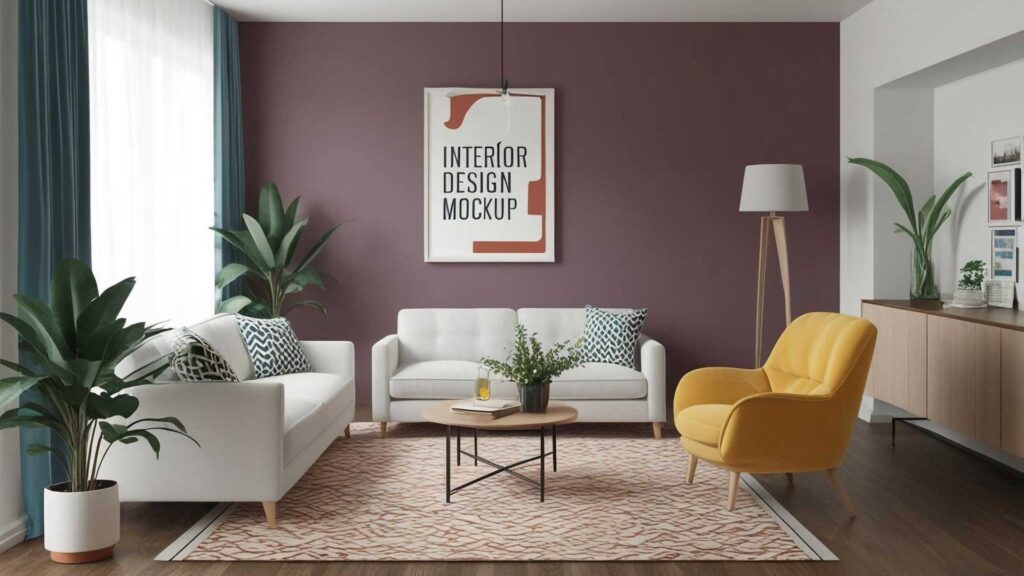Choosing the right color palette for your home is like selecting the perfect outfit: it should reflect your personality, set the mood, and create harmony throughout your space. A well-thought-out color scheme can transform your home from ordinary to extraordinary, enhancing its beauty and ambiance. If you’re feeling overwhelmed by the endless possibilities, fear not! Here’s a creative guide to help you choose the perfect color palette for your home.
1. Understand the Psychology of Colors
Colors have a profound impact on mood and perception. Before diving into paint swatches, familiarize yourself with color psychology. For example:
- Warm Colors (Reds, Oranges, Yellows): Energizing and inviting, perfect for social spaces like living rooms or kitchens.
- Cool Colors (Blues, Greens, Purples): Calming and serene, ideal for bedrooms or home offices.
- Neutral Colors (Whites, Grays, Beiges): Versatile and timeless, providing a backdrop for bolder accents.
Identify the atmosphere you want to create in each room and let that guide your choices.
2. Draw Inspiration from Your Surroundings
Look to your environment for inspiration. Whether it’s the natural landscape outside your window or a favorite piece of artwork, use elements from your surroundings to inform your palette.
- Nature: Earthy greens, soft browns, and sky blues can bring the outdoors inside.
- Art and Decor: A colorful painting or textile can serve as a focal point, inspiring complementary colors throughout the space.
3. Start with a Focal Point

Identify a key piece in your room that will serve as the focal point. This could be a statement piece of furniture, a vibrant rug, or a stunning light fixture. Use the colors within this piece to inform your overall palette.
For example, if you have a colorful painting, pull one or two shades from it to create a cohesive look throughout the room.
4. Create a Color Flow
To achieve a harmonious look, establish a flow of colors from room to room. Use a base color that will appear in multiple spaces, then build on it with accent colors that add character.
- Open Concept Spaces: In areas with an open layout, choose colors that complement one another to maintain a sense of continuity.
- Transitioning Colors: Use lighter shades in smaller, darker spaces to create a feeling of openness, while deeper hues can add coziness to larger areas.
5. Consider Lighting
Lighting can dramatically change how colors appear in your home. Test your chosen colors in different lighting conditions—morning light, afternoon sun, and evening glow.
- Natural Light: Bright colors may appear more vibrant, while darker shades can look more muted.
- Artificial Light: Warm bulbs can enhance warm colors, while cool bulbs can bring out cooler tones.
Paint large swatches on your walls to observe how the color interacts with light throughout the day.
6. Choose a Base, Accent, and Trim Color
A balanced color palette often consists of a base color, an accent color, and a trim color:
- Base Color: The main color for your walls. It should be versatile and set the tone for the room.
- Accent Color: A bolder color used for focal points like an accent wall, furniture, or decor.
- Trim Color: A contrasting shade for molding, baseboards, and doors. This color can either complement your base color or offer a striking contrast.
7. Test Before Committing
Before fully committing to your color palette, take the time to test your selections. Purchase sample pots of paint and apply them to your walls. Observe how they look at different times of day and how they coordinate with your furnishings.
Bonus Tip: Create a Mood Board
Gather paint swatches, fabric samples, and images of decor that inspire you. Arrange them on a mood board to visualize how they work together. This can help clarify your vision and guide your choices.
8. Embrace Personal Style
Ultimately, your home should reflect your unique style. Don’t be afraid to experiment with color! Whether you lean toward bold and bright or soft and muted, trust your instincts.
Consider incorporating your favorite colors into accent pieces, artwork, or textiles, allowing your personality to shine through.
Conclusion: Your Color Adventure Awaits!
Choosing the perfect color palette for your home can feel daunting, but it’s also an exciting opportunity to express yourself. By understanding color psychology, drawing inspiration from your surroundings, and considering lighting and flow, you’ll create a harmonious and inviting atmosphere. So grab those paint swatches, gather your inspirations, and embark on your colorful journey to transform your home into a true reflection of you!
